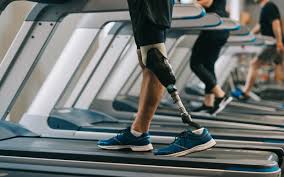
Breaking News
 Tether claims billions in profits as it grows 'secured loans'
Tether claims billions in profits as it grows 'secured loans'
 DC PANICS as Pam Bondi's Grand Jury CHANGES EVERYTHING!
DC PANICS as Pam Bondi's Grand Jury CHANGES EVERYTHING!
 Sydney Sweeney Ad Outrage & MAGA Memes: DNC Bankruptcy, Deep State Exposed! Trump 2025
Sydney Sweeney Ad Outrage & MAGA Memes: DNC Bankruptcy, Deep State Exposed! Trump 2025
Top Tech News
 3D printing set to slash nuclear plant build times & costs
3D printing set to slash nuclear plant build times & costs
 You can design the wheels for NASA's next moon vehicle with the 'Rock and Roll Challenge
You can design the wheels for NASA's next moon vehicle with the 'Rock and Roll Challenge
 'Robot skin' beats human reflexes, transforms grip with fabric-powered touch
'Robot skin' beats human reflexes, transforms grip with fabric-powered touch
 World's first nuclear fusion plant being built in US to power Microsoft data centers
World's first nuclear fusion plant being built in US to power Microsoft data centers
 The mitochondria are more than just the "powerhouse of the cell" – they initiate immune...
The mitochondria are more than just the "powerhouse of the cell" – they initiate immune...
 Historic Aviation Engine Advance to Unlock Hypersonic Mach 10 Planes
Historic Aviation Engine Advance to Unlock Hypersonic Mach 10 Planes
 OpenAI CEO Sam Altman Pitches Eyeball-Scanning World ID to Bankers
OpenAI CEO Sam Altman Pitches Eyeball-Scanning World ID to Bankers
 New 3D-printed titanium alloy is stronger and cheaper than ever before
New 3D-printed titanium alloy is stronger and cheaper than ever before
 What is Unitree's new $6,000 humanoid robot good for?
What is Unitree's new $6,000 humanoid robot good for?
 "No CGI, No AI, Pure Engineering": Watch Raw Footage Of 'Star Wars'-Style Speeder
"No CGI, No AI, Pure Engineering": Watch Raw Footage Of 'Star Wars'-Style Speeder
These New Bionic Legs Allow Amputees to Feel and Use Prosthetic as If It Were Their Real Leg

The amputees were able to climb over various obstacles without having to look thanks to sensory feedback from the prosthetic leg that is delivered to nerves in the leg's stump.
Djurica Resanovic lost his leg in a motorbike accident several years ago which resulted in amputation above the knee. Thanks to novel neuroprosthetic leg technology, Resanovic was successfully connected to his bionic leg during clinical trials in Belgrade, Serbia.
"After all of these years, I could feel my leg and my foot again, as if it were my own leg," reports Resanovic about the bionic leg prototype. "It was very interesting. You don't need to concentrate to walk, you can just look forward and step. You don't need to look at where your leg is to avoid falling."
Scientists from a European consortium led by Swiss Institutions, ETH Zurich and EPFL spin-off SensArs Neuroprosthetics, with clinical trials in collaboration with institutions in Belgrade, Serbia, successfully characterized and implemented bionic leg technology with three amputees. The results appear in this week's issue of Science Translational Medicine.
"We showed that less mental effort is needed to control the bionic leg because the amputee feels as though their prosthetic limb belongs to their own body," explains Stanisa Raspopovic, the ETH Zurich professor who led the study.

 Anonymous Email Forwarding
Anonymous Email Forwarding 

